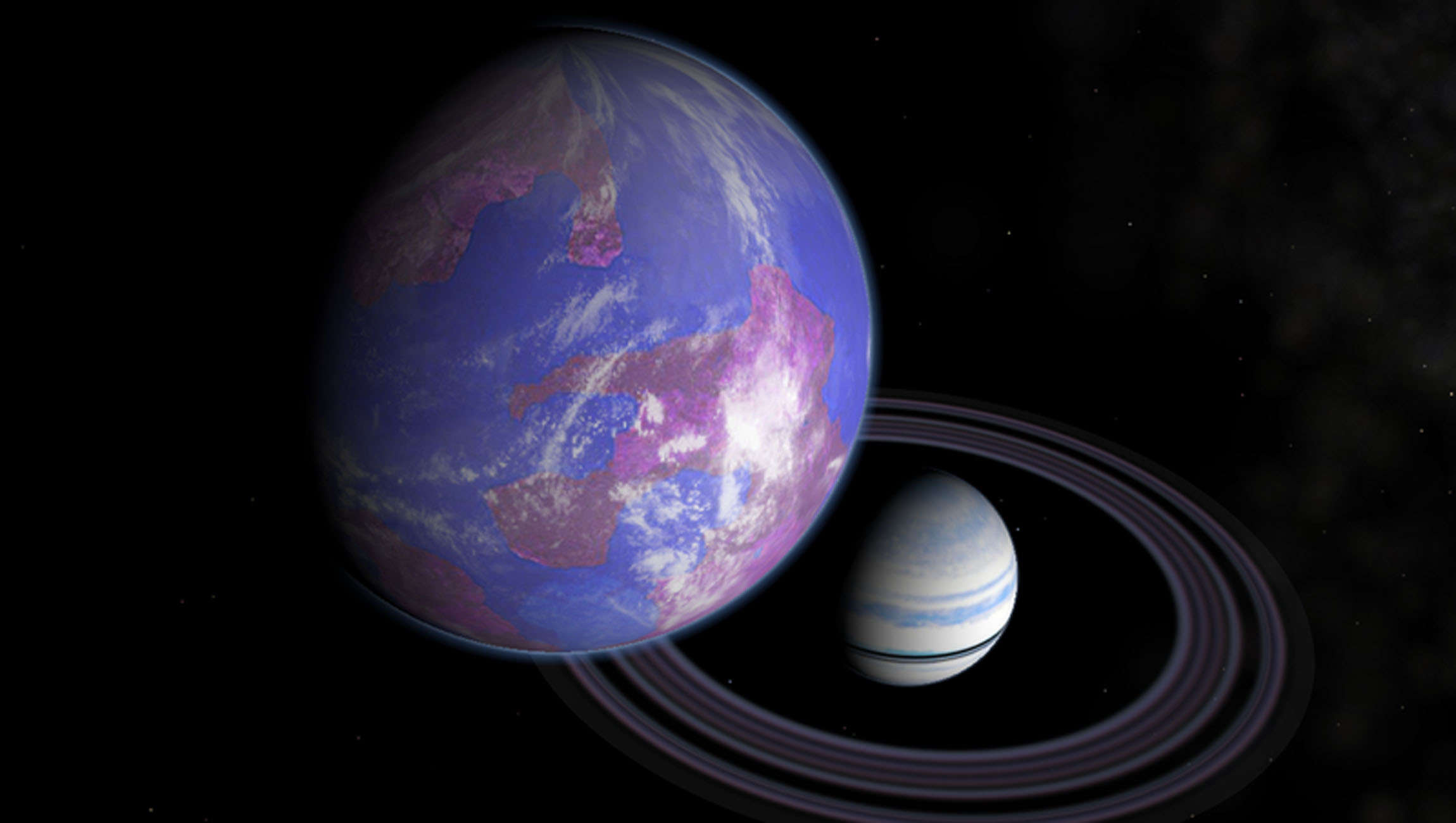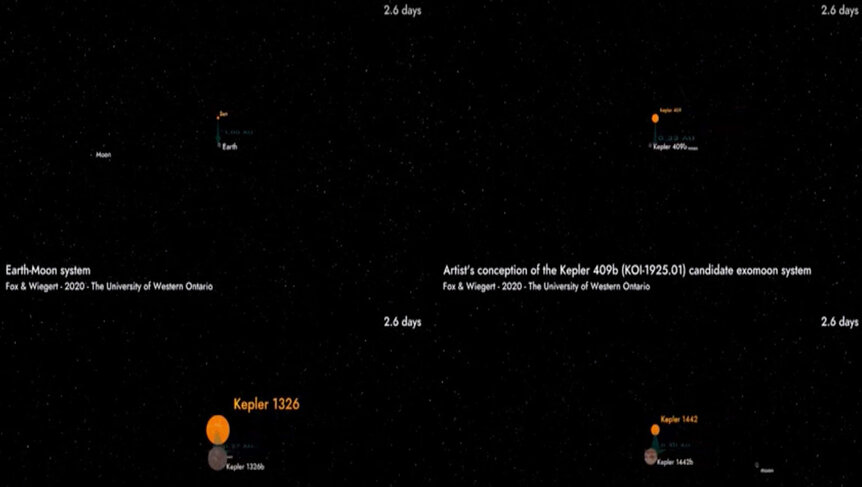Create a free profile to get unlimited access to exclusive videos, sweepstakes, and more!
So that’s where all the exomoons are hiding, at least according to their shadows

Moons seem to be everywhere these days. There should be fresh boot prints on our own in several years, and NASA is going to send off missions to the moons of Jupiter, Saturn and maybe even Neptune in the near future. But what lies beyond our solar system?
Astronomers have detected what could be evidence for six new exomoons hiding in Kepler data. At least evidence of something really moonlike transiting alien stars seems to suggest their existence. This is such a rare find because while exoplanets have made headlines, not many of their moons have been found. The moons are anywhere from 200 and 3,000 light years away. Exomoons fascinate scientists because of what they could tell us about how other star systems formed in comparison to our own.
“If a transiting exoplanet has a moon, that moon could be detected directly from the transit it produces itself, or indirectly via the transit timing variations it produces in its parent planet,” said University of Western Ontario Ph.D. candidate Chris Fox and colleague Paul Wiegert, who made the discoveries and recently published a study in Monthly Notices of the Royal Astronomical Society.
Planet hunters like NASA’s TESS and the now-decommissioned Kepler discover new celestial bodies through their transits. When a star experiences a sudden dip in brightness, that means something else has passed by, or transited, that star. This is usually how space telescopes shed light on new planets. While planets are not huge balls of blazing gas whose luminosity makes any shadow extremely obvious, those close enough to the star bask in its light. Starlight makes many of them bright enough to reveal objects, such as moons, trying to sneak by them. These objects usually get caught. The emphasis here is on usually.
Of the 4,000 exoplanets that have been revealed since the mid-‘90s, none have had any moons confirmed, though there are possible candidates. Even these are difficult to detect in the far reaches of space. Some are too far away, while others are so small that they can barely, if even, be seen. While finding six potential exomoons is an anomaly in itself, the downside for Fox and Wiegert was that they were also small enough for their transits to be virtually undetectable. The researchers had to rely on the gravitational influence these potential moons had on their parent planets. That was where they ran into problems.
Transit photometry uses the light that a star or planet gives off at any given time. Transits are most easily detected when dips in brightness happen regularly, meaning the planet is orbiting its star, or the moon orbiting its planet, without anything getting in the way. Not all transits run smoothly. These transits are variable—you never know exactly when to expect them. Variations in the timing of transits are called TTVs (transit timing variations), which mean they usually show up several minutes early or late, which could mean that some other object might have been disrupting the telescope’s view when it was observing them. TTVs were found in all eight of the systems that Kepler had kept its eye on, though data from six of them seemed to most strongly suggest the presence of exomoons.
“Though we also find that the TTVs could be equally well reproduced by the presence of a non-transiting planet in the system, the observations are nevertheless completely consistent with a existence of a dynamically stable moon small enough to fall below Kepler's photometric threshold for transit detection, and these systems warrant further observation and analysis,” Fox and Wiegert said.
Kepler just could not detect enough light for the researchers to confirm that these are definitely moons. TESS might have a better shot. It can study stars 30 to 100 times brighter than what Kepler could see, which will make later observations using its data much easier. Other astronomers using Kepler data to find potential exomoons have also struggled with what exactly they were looking at. In one previous study, the object in question could have been a planet or a moon, because what was transiting what remained unclear. It could have either been a massive planet orbiting a small, faint star or a moon lighter than Earth orbiting a planet more massive than Jupiter.
So the search for exomoons goes on, and while we haven’t yet taken one giant leap, this is at least another small step.















